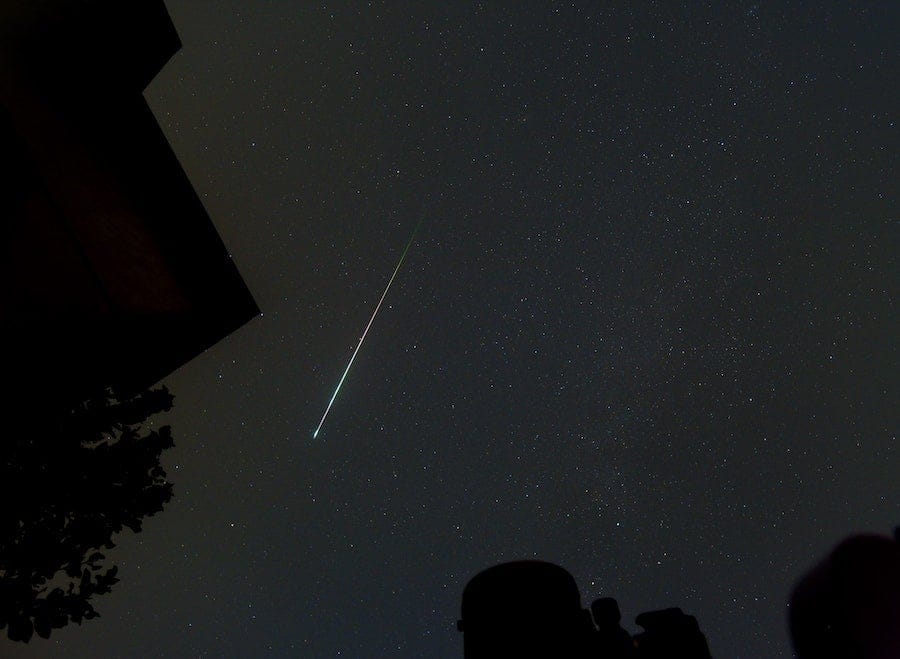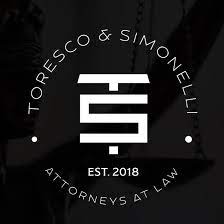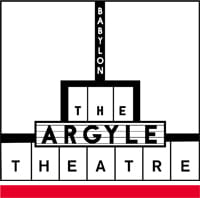
Support provided by Northwell’s Mather Hospital, which delivers the five-star difference in exceptional care and is ranked by Medicare in the top 5% of hospitals nationwide for overall clinical performance and patient experience.
On the night of May 30 into the early hours of May 31, Long Islanders will be in for a treat when a meteor shower of galactic proportions graces the darkened skies with a showing of the like not seen in 20 years.
Or not.
A comet with the esoteric name of 73P/Schwassmann-Wachmann 3 (SW3) has been orbiting the sun about every five-and-a-half years. Humans have known about the heavenly ball of ice since it was discovered by German astronomers Arnold Schwassmann and Arno Arthur Wachmann back in 1930. The faint object caused very little excitement — we even lost sight of it until the 1970s. That was until the thing dramatically broke apart on a return trip to the sun in 1995.
A paper about the comet penned by News 12 meteorologist and instructor at New York’s Hayden Planetarium Joe Rao said that trip caused quite a shock in the sky observing community almost 30 years ago. The comet’s brightness was much more intense than expected. Something was clearly going on.
“Here was a classic demonstration of how a comet can go around the Sun on numerous occasions as a staid member of the solar community, and then abruptly and unpredictably undergo some sort of violent change,” he wrote.
The reason for the burst in luminosity was that the comet had fractured into four distinct parts sending debris out everywhere. NASA reports that by 2006 observers found that the comet had broken into 70 pieces and has been degrading even more ever since.
“Since comets are relatively fragile, stresses from heat and gravity and outgassing, for example, could be responsible for their tendency to breakup in such a spectacular fashion,” a NASA post explained.
The meteor shower that might result from SW3 is being called the tau Herculid shower because of the constellation that the comet’s dust particles usually seem to emerge from. (In his paper Rao says that most likely the 2022 event will seem to come from the constellation Boötes, because the meteoroids from SW3 are traveling forward or ahead of it.)
That is if the particles raining down on earth put on the show sky watchers all hope that it does. A big if, according to scientists.
“This is going to be an all or nothing event,” said NASA’s Bill Cooke in a statement. He leads the Meteoroid Environment Office at NASA’s Marshall Space Flight Center in Huntsville, Alabama.
“If the debris from SW3 was traveling more than 220 miles per hour when it separated from the comet, we might see a nice meteor shower,” he said. “If the debris had slower ejection speeds, then nothing will make it to Earth and there will be no meteors from this comet.”
Like hurricanes, meteor showers are measured in their intensity. The number of shooting stars an observer can see during an event’s peak is called the Zenith Hourly Rate (ZHR). Some of the most impressive meteor showers have a ZNR factor of 100 but when that number reaches the thousands, the meteor shower becomes a meteor storm. SW3’s show might even be in the category of a meteor storm. Again, it might not.
Rao says that experts are split on whether or not Earth will pass through the material ejected from comet SW3.
“Unfortunately, such calculations are fraught with uncertainties,” Roa wrote on his Facebook page. “It could mean the difference between all or nothing.”
Rao has a series of talks on the subject planned in the weeks before the meteor shower (or storm) arrives. Locally, you can attend one of his free Zoom presentations called “The Night of the Shooting Stars.” Register for the upcoming shows hosted by one of the below Long Island libraries or the Hamptons Observatory.
Port Jefferson Free Library on Monday, May 16 at 7 p.m.
Mastics-Moriches-Shirley Library on Tuesday, May 17 at 7 p.m.
Sachem Public Library on Friday, May 20 at 7 p.m.
Hamptons Observatory on Monday, May 23 at 7 p.m.
Experts say the best way to observe any meteor shower is to find a nice dark sky without obstruction, lay down in a lawn chair, allow time for your eyes to adjust to the dark, and just look up – no telescope needed although you might want to keep a pair of binoculars handy.
While expectations for the SW3 shower are tempered, there is a lot of optimism among sky watchers.
“Let’s hope nature is in a ‘show-off mode’ that night and spread the word,” Rao wrote on Facebook.
Top: Photo by stanislao d’ambrosio on Unsplash.
























